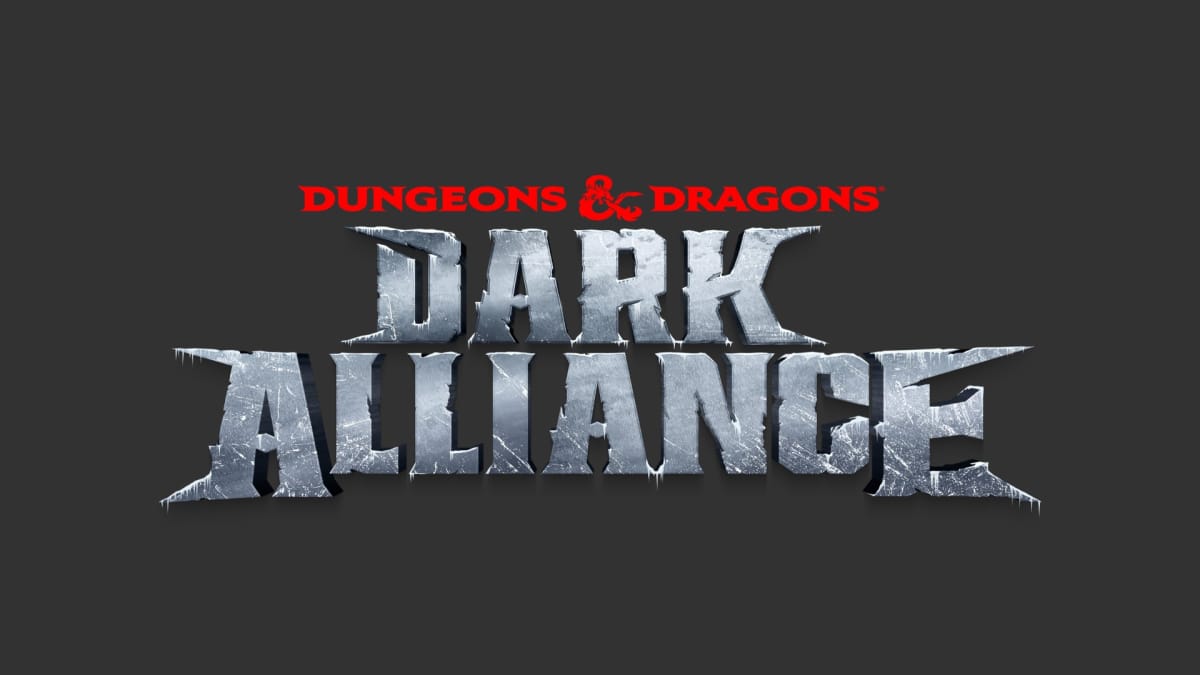Dungeons & Dragons: Dark Alliance is something I wish was more common in the game industry. It is a modestly produced experience with sensible expectations and goals. It manages to experiment within that particular scale but remembers to focus on building a decent core. Finally, it's a game that attempts to put a modern spin on arcade brawlers of old – Shadows Over Mystara for a new generation – with RPG elements. The result is a game with a lot of charm and just enough presentation and punch to help gloss over a few confusing and undercooked elements.
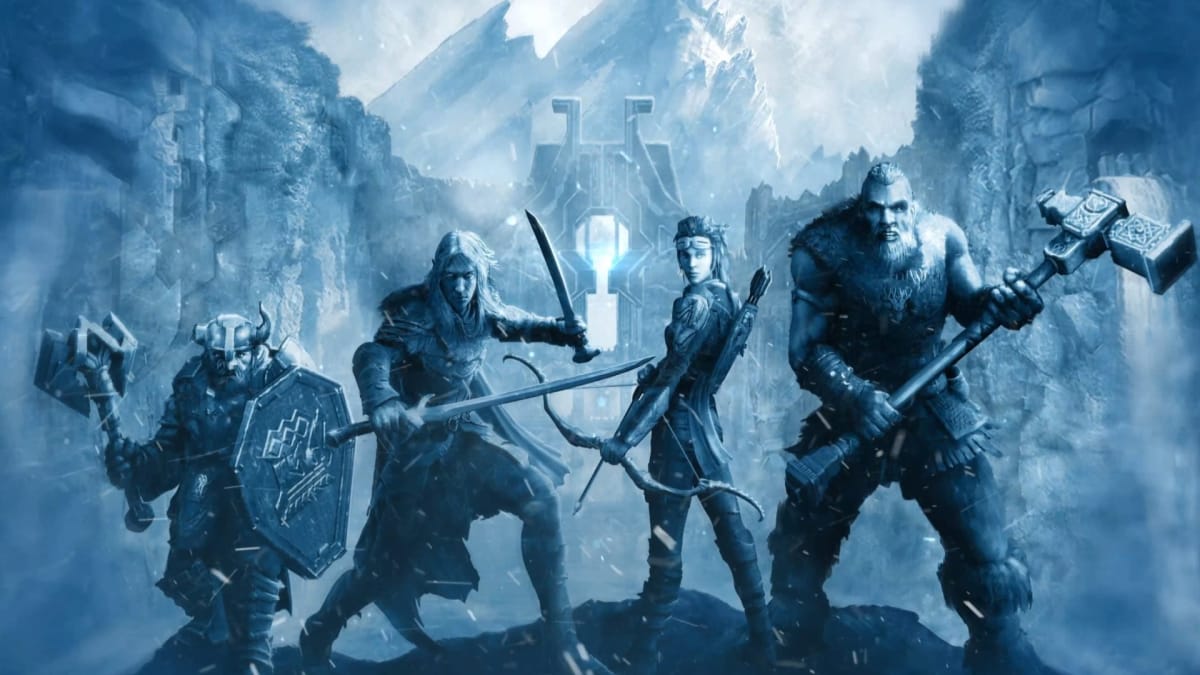
Gather The Party and Venture Forth
The main story is based loosely around the Dungeons & Dragons novel, The Crystal Shard by R.A Salvatore. There's an all-powerful Shard somewhere deep within the land of Icewind Dale and there is a dark alliance of evil creatures, cultists, and monsters, all scrambling in a race to get to it. Naturally, an adventuring party soon arrives to set things right, made up of iconic heroes from the TRPG's rich history, all ready to stop the threat one skirmish at a time.
That is basically it for an in-depth narrative. Much like the arcade games I mentioned above, the story of Dark Alliance feels less like a sweeping epic of righteous struggle against hopeless odds so much as it does a succession fights against a rotating cast of villains. The focus is more on the challenge and the moment-to-moment fights more than narrative; a string of dungeon crawls more than anything else.
Thankfully, Canadian developer Tuque Games manages to make each of the four heroes play distinctly from one another. Drizzt Do'urrden is a dual-sword-wielding assassin all about rapid slashes and dodging. Wulfgar is a barbarian all about running into the thick of a fight, swinging his slow but powerful hammer to break armor and stun foes. Bruenor Battlehammer is an armored dwarf all about drawing attention from his allies with high defense and support abilities. Finally, there is the archer Catti-Brie who fights from long-range with a quiver full of specialized arrows, and the ability to heal her allies.
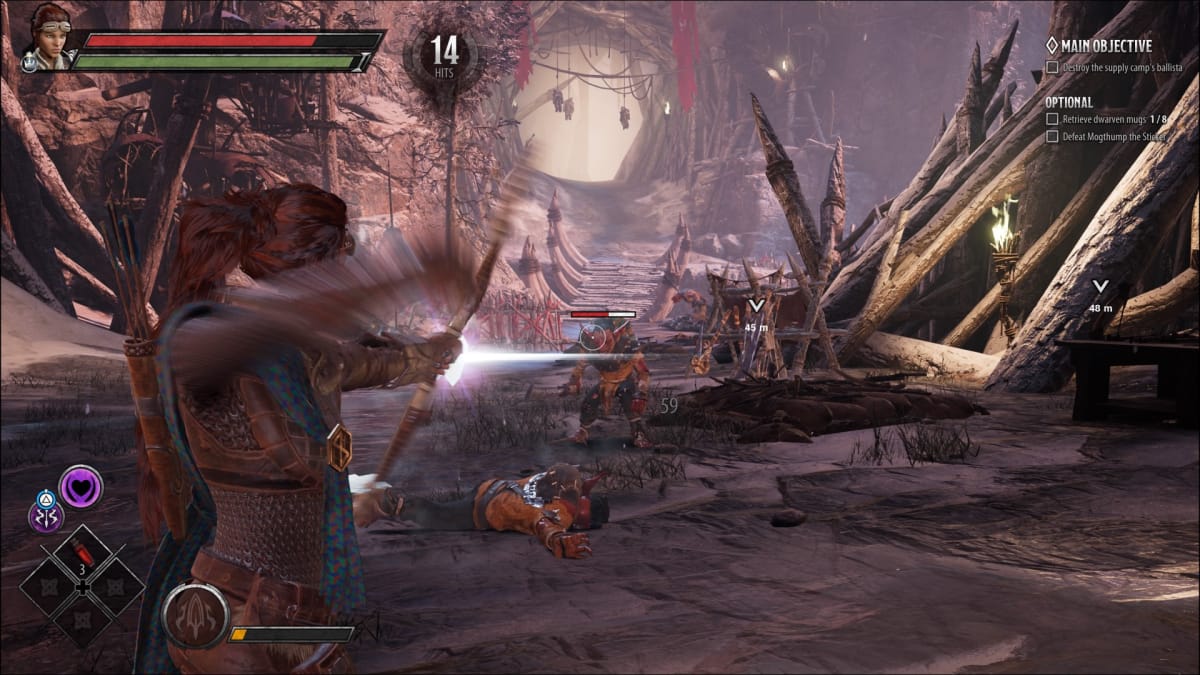
Breaking The Action Economy
As for the combat itself, it gets a lot right. In addition to a light and heavy attack which can be chained together into combos, each character can have two special abilities equipped, Drizzt can turn invisible, Wulfgar can cause a shockwave, etc. Finally, they have a unique Ultimate ability. Bruenor sets down a banner that boosts allies' defenses, Catti-Brie can shoot magic arrows, Wulfgar goes into a barbarian rage complete with a spin-to-win hammer swing, and Drizzt summons his magic panther companion Guenhwyvar to help with some magical claws and teeth. It also helps that overall audiovisual feedback for each character is snappy and satisfying, whether it be the heft and impact of Wulfgar's hammer or the speedy death of a thousand cuts that Drizzt's swords provide.
What helps spice this up is Dark Alliance's stamina and combo system. Like most modern Action RPGs, every single major action drains a stamina bar that slowly refills over time which you have to manage carefully. If it fully depletes, you can't move and are open for counterattacks. Alternatively, every single time you perform a powerful attack or combo, your maximum stamina drops by a certain amount. As for combos, it takes inspiration from a Platinum Games hack and slasher. Keep attacking enemies without getting hit or stopping for too long and a hit counter will continue to rise. The higher the hit chain, the quicker your Ultimate ability charges.
The result is a pretty solid combat system that rewards both button mashing and mindful play. There's an almost Pavlovian desire to have a combo go over 100 hits, all while knowing when to strategically break off and catch your breath. Using your abilities and knowing when to use costly power attacks adds just enough spice to keep it from mindless button mashing.
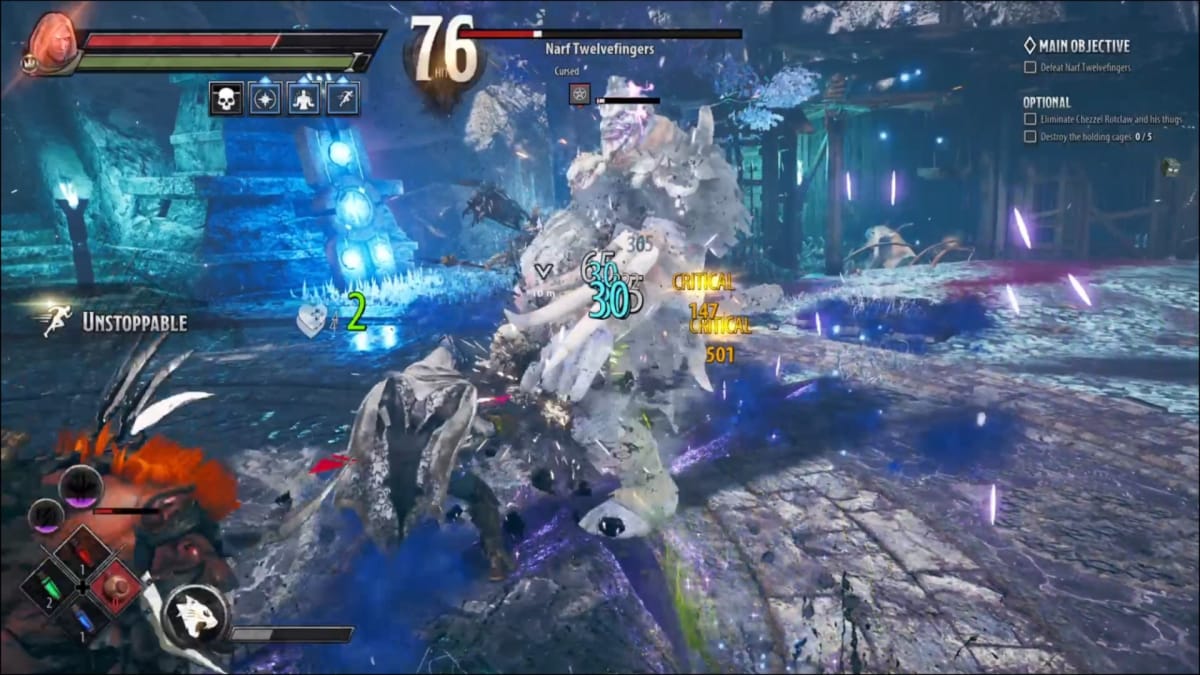
It helps that for a game set in the world of Dungeons & Dragons, there is plenty of enemy variety as you progress. Things start off simple with generic goblins and verbeeg (basically ogres), but eventually, you'll be dealing with magically teleporting cultists, armored and vicious duergar, bloodthirsty gnolls covered in blades, trolls, frost giants, and more. Add in the fact that each of these enemies comes with their own special elemental damage and status effect you need to watch out for and fights can be chaotic fun.
Unfortunately, the combat system has several issues that add up. Simply put, the lock-on system is frustrating. Whenever you lock-on to an enemy, the camera zooms in way too close and is placed far too low to the ground. Not only does it make it easier to be blindsided, it just feels awkward. Not helping this is the lack of attack tracking. Whether you're locked on or not you can have a chain of attacks go past the enemy and into a spot a few crucial inches behind or to the side of your target. Worse still, re-orienting yourself to your target feels as slow as molasses with the absence of a quick-turn ability. At worst, it can make fights feel like this uneven mix of a modern third-person action game combined with the level design and enemy configurations of a third-person isometric RPG. One encourages one-on-one combat where you watch out for attack patterns, the other demands navigating hoards of enemies, traps, and environmental hazards.
The good news is that enemy placement and the level design mitigates this a bit. The enemy AI is pretty braindead, more like snarly pinatas than genuine threats. This improves in mid to late game encounters as more exotic abilities are introduced, but it still doesn't hide limited pathfinding. More times than I admit I jumped over a pit or climbed a ladder, only to watch the swarm of enemies behind me just give up and go back to their arena. These are still flaws, but it feels more adorable than frustrating.
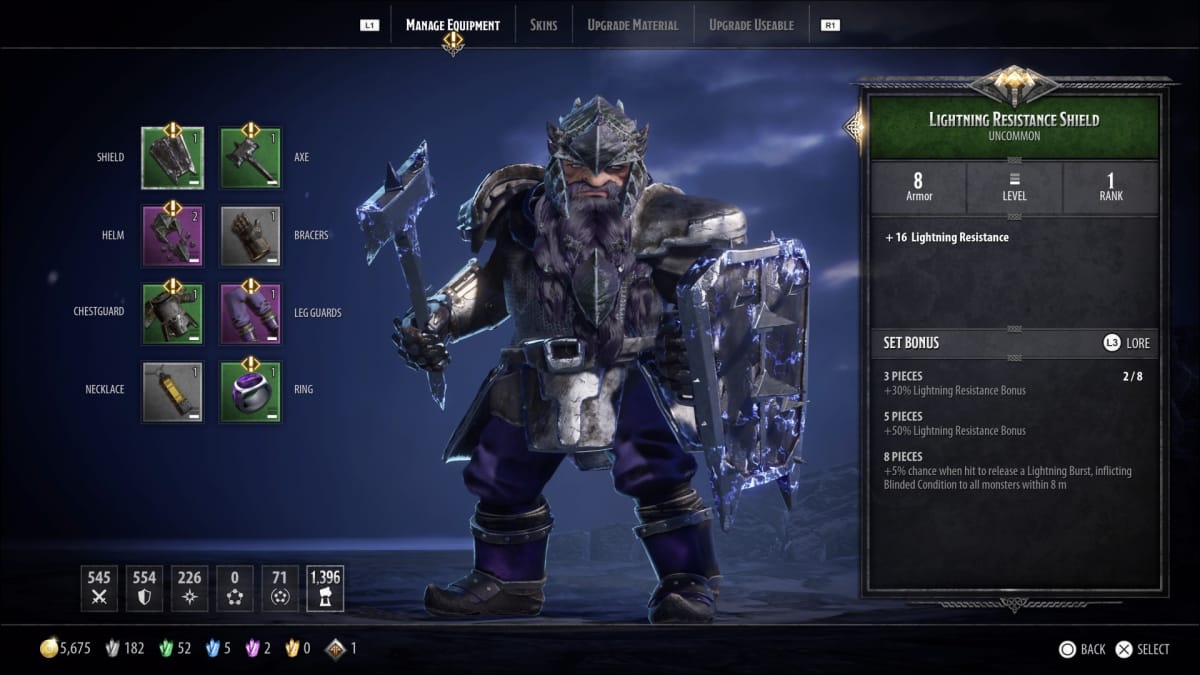
But, much to my relief, Dark Alliance does not monetize these systems with live-service elements like lootboxes, premium currency, or experience boosters.
The Promise of Riches
Another staple of Dungeons & Dragons that Dark Alliance revels in is its loot system and RPG mechanics. Beating enemies, solving puzzles, opening treasure chests, and completing optional objectives rewards you with gold, crystals, armor, and weapons for your characters. Finishing dungeons rewards you with experience points that you can use to improve your characters. All of this does tie into a universal power system, much like Destiny, and helps you tackle various missions on higher difficulties for potentially better rewards.
The loot system is one that we've seen in multiple RPGs, color-coded pieces of gear sorted in rarity ranging from gray to green, blue, purple, and orange, each tier packed with stat boosts and ongoing buffs to different flavors of damage and defense. There's even a cosmetic system where you can change the appearance of certain gear. The leveling system includes stat increases taken straight from a D&D character sheet as well as skill trees. All of this has long become the standard for a looter action game.
But, much to my relief, Dark Alliance does not monetize these systems with live-service elements like loot boxes, premium currency, or experience boosters. Changing the look of your armor is earned in-game and costs practically nothing. Crystals and gold are simply used to improve weapons and armor you enjoy using, and you can just sell gear you're not using anymore. It's a straightforward system that doesn't shake you down for cash or obfuscate its economy with multiple currencies and hoops to jump through.
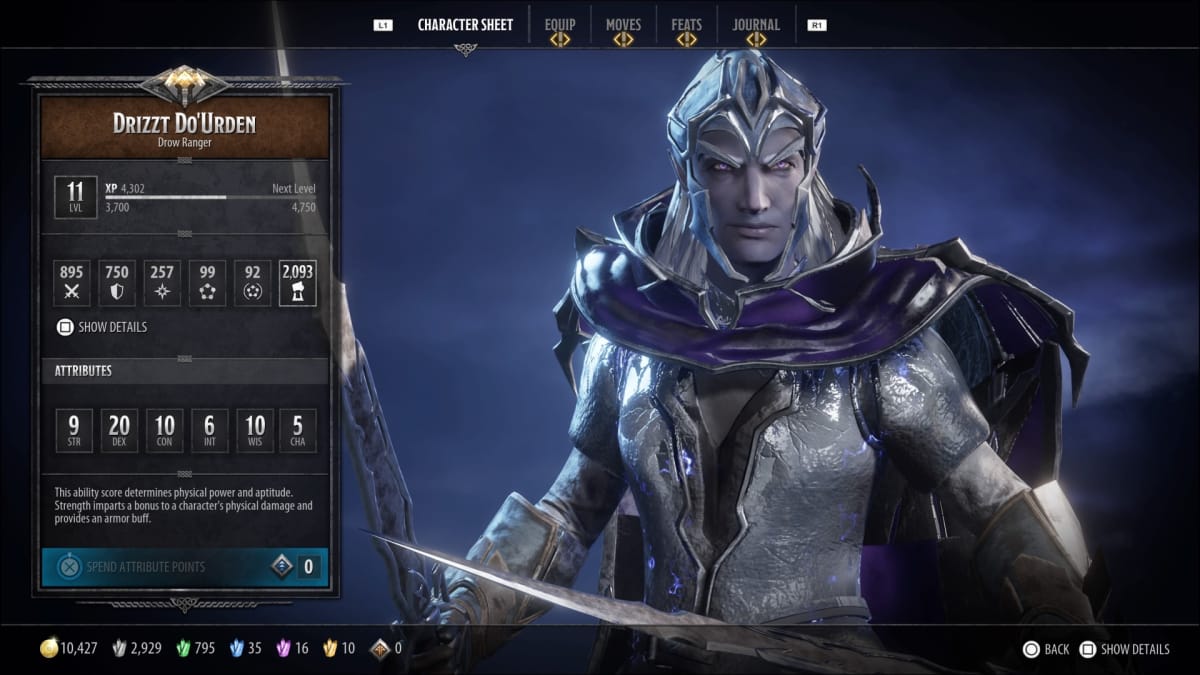
As for getting better gear, the key lies with one of the game's more brilliant takes on a checkpoint system. After each major encounter, you'll have the option to either set up camp and take a short rest, which will restore consumables like healing potions, top off your health and stamina, or you keep going with what you have. If you choose the latter, the chances of getting better loot goes up. This effect stacks multiple times. The downside is that if you and your party dies, you'll end up going back to the last spot you made camp – or all the way back to the start of the dungeon if you're particularly reckless – with every single monster back to life for a rematch.
On a less inspiring note are the optional objectives and exploration elements. There are hidden areas and puzzles scattered throughout each mission, but they're just key-hunting and switch puzzles. The optional objectives aren't much better with things like “kill this optional boss” or “collect/destroy X amount of thing Y.” These aren't necessarily bad, especially for a game that puts its action center stage, but it can slow down the pacing if you're a completionist.
Finally, Dark Alliance has online co-op, and it's the reason to play this title. You can beat the entire game offline as a single-player experience with whoever you like, but playing with friends really highlights just how much the four playable heroes work with one another. There are a few hiccups with matchmaking. You can't enter a group in the middle of a dungeon and various social mechanics, emotes, gear comparisons, etc., are non-existent. Adventuring parties (as of this writing) can't have doubles of the same character, which can make looking for a lobby more annoying. My advice is coordinate with a group of friends first rather than join a public lobby if you're easily frustrated.
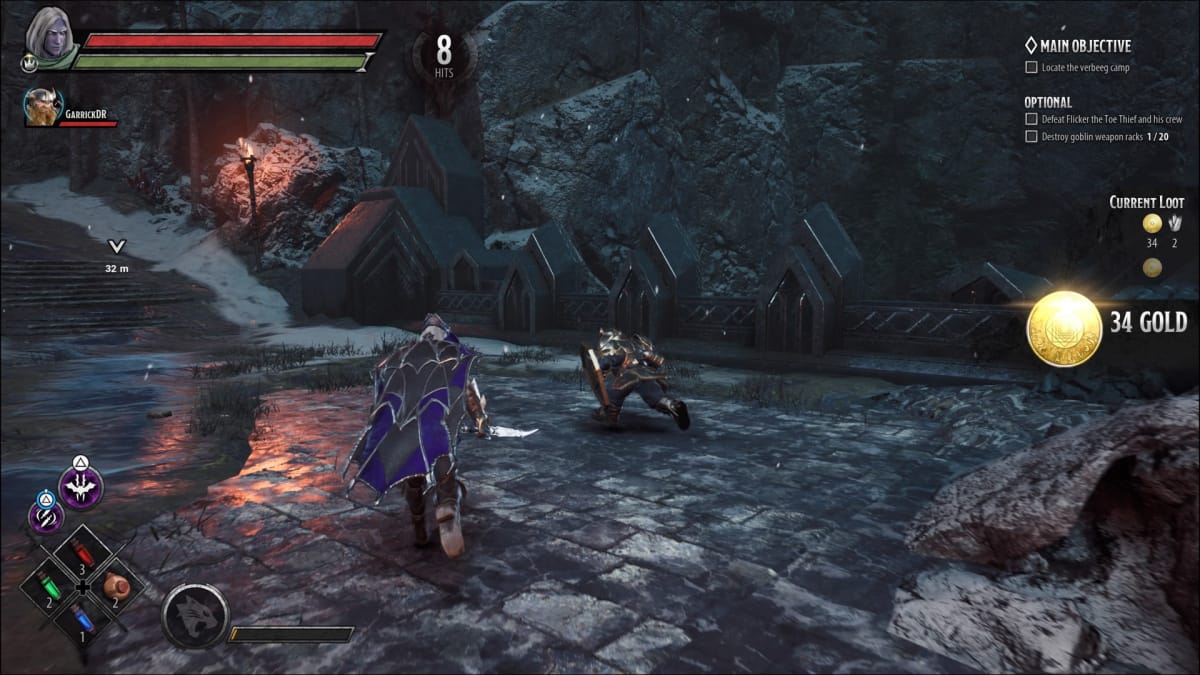
Dungeons & Dragons: Dark Alliance | Final Thoughts
For all of my complaints and criticism, I am glad that Dark Alliance exists. It's a game sold at $40 and puts its focus more on their core combat and gameplay over presentation and anti-consumer practice. On its own, it's a solid fifteen-hour-long adventure, double that long if you want to reach the level cap of 20 and go for full armor sets, and it is great for playing with friends. While there is jank to be found, it still manages to put a fresh arcade-action spin on the world of Dungeons & Dragons. Keep in mind these expectations and you'll more than get your money's worth from this trek through the Forgotten Realms.
TechRaptor reviewed Dungeons & Dragons: Dark Alliance on PlayStation 5 with a copy provided by the publisher.
Review Summary
Pros
- Satisfying Combat With Diverse Heroes
- Solid RPG Elements and Varied Enemies
- Multiple Difficulty Levels Made for Online Co-Op
Cons
- Awkward Lock-On Camera and Movement Controls
- Minimal Online Social Elements
- Braindead Enemy AI
Have a tip, or want to point out something we missed? Leave a Comment or e-mail us at tips@techraptor.net
